-
The ash dieback invasion of Europe was founded by two genetically divergent individuals M McMullan, M Rafiqi, G Kaithakottil, BJ Clavijo, L Bilham, E Orton, …Nature Ecology & Evolution, 1
Abstract
Accelerating international trade and climate change make pathogen spread an increasing concern. Hymenoscyphus fraxineus, the causal agent of ash dieback, is a fungal pathogen that has been moving across continents and hosts from Asian to European ash. Most European common ash trees (Fraxinus excelsior) are highly susceptible to H. fraxineus, although a minority (~5%) have partial resistance to dieback. Here, we assemble and annotate a H. fraxineus draft genome, which approaches chromosome scale. Pathogen genetic diversity across Europe and in Japan, reveals a strong bottleneck in Europe, though a signal of adaptive diversity remains in key host interaction genes. We find that the European population was founded by two divergent haploid individuals. Divergence between these haplotypes represents the ancestral polymorphism within a large source population. Subsequent introduction from this source would greatly increase adaptive potential of the pathogen. Thus, further introgression of H. fraxineus into Europe represents a potential threat and Europe-wide biological security measures are needed to manage this disease.
Monthly Archives: April 2018
Newcomers: J. Prieto and J. Bailly
| Name | PRIETO Jorge jorge.prieto@eez.csic.es |
 |
| Team | Ecogenomics of interactions team | |
| In interaction with | Marc Buée, in collaboration with Ana Rincón (ICA-CSIC, Madrid) and Concepción Azcón-Aguilar (EEZ-CSIC, Granada) | |
| Subject | High-throughput analysis of ectomycorrhizal fungal communities in forest soils from Central and Southeastern Spain | |
| Type of study | PhD student, coming from Spanish Council for Scientific Research (CSIC) | |
| Period | April-June, 2018 |
| Name | BAILLY Justine justine.bailly4@outlook.fr |
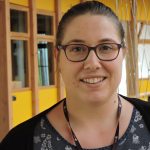 |
| Team | Ecogenomics | |
| Supervisors | V. Basso/ C. Veneault-Fourrey | |
| Subject | Role of Laccaria MiSSP7 in the poplar JAZ protein complex | |
| Type of study | Internship, Master 1 Microbiology | |
| Period | April-June, 2018 |
Article: Mycorrhiza
N-Acetylglucosaminidase activity, a functional trait of chitin degradation, is regulated differentially within two orders of ectomycorrhizal fungi: Boletales and Agaricales F Maillard, M Didion, L Fauchery, C Bach, M Buée. Mycorrhiza, 1-7
Abstract
Chitin is one of the most abundant nitrogen-containing polymers in forest soil. Ability of ectomycorrhizal (EM) fungi to utilize chitin may play a key role in the EM symbiosis nutrition and soil carbon cycle. In forest, EM fungi exhibit high diversity, which could be based on function partitioning and trait complementarity. Although it has long been recognized that closely related species share functional characteristics, the phylogenetic conservatism of functional traits within microorganisms remains unclear. Because extracellular N-acetylglucosaminidase activity has been proposed as functional trait of chitin degradation, we screened this activity on 35 EM fungi species with or without chitin in the growth medium to (i) describe the functional diversity of EM fungi and (ii) identify potential links between this functional trait and EM fungal phylogeny. We observed large variations of the extracellular N-acetylglucosaminidase activities among the fungal strains. Furthermore, our results revealed two regulation patterns of extracellular N-acetylglucosaminidase activities. Indeed, these chitinolytic activities were stimulated or repressed in the presence of chitin, in comparison to the control treatment. These profiles of extracellular N-acetylglucosaminidase stimulation/repression might be conserved at a high phylogenetic level in the Basidiomycota phylum, as illustrated by the opposite patterns of regulation between Boletales and Agaricales. Finally, the downregulation of this activity by chitin, for some EM fungal groups, might suggest another chitin degradation pathway.
Book review
Iron–Sulfur Clusters in Chemistry and Biology. Volume 2: Biochemistry, Biosynthesis and Human Diseases. Edited by Tracey Rouault. De Gruyter, 2017. Pp. xxi + 470. ISBN 978-3-11-047985-0. JP Jacquot
Newcomers: Master internships
| Name | Guillaume Salzet guillaume.salzet@agroparistech.fr |
 |
| Team | Stress response and redox regulation team | |
| Supervisor | E. Gelhaye | |
| Subject | Relationship between wood extracts and Glutathione transferases | |
| Type of study | M1 AgroParisTech/ENS internship | |
| Period | February-June, 2018 |
| Name | PAINEAU Manon m.paineau@groupe-esa.net |
 |
| Team | Ecology of forest pathogenic fungi team | |
| Supervisors | F. Halkett, A. Andrieux and B. Fabre | |
| Subject | Determinants of infection kinetics in poplar rust | |
| Type of study | Master internship (Crop Protection & Environment, ESA, fifth year) | |
| Period | March-September, 2018 |
| Name | VIOTTI Chloé chloe.viotti@etu.univ-lorraine.fr |
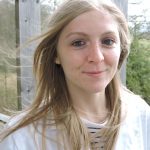 |
| Team | Ecogenomics of interactions team | |
| Supervisors | M. Buée/S. Mieszkin | |
| Subject | Successions and interactions of microbial guilds during the wood decomposition in forest: comparison of sapwood and heartwood from sessile oak | |
| Type of study | Master 2 internship | |
| Period | March-August, 2018 |
| Name | SANCHEZ Brice brice.sanchez52@gmail.com |
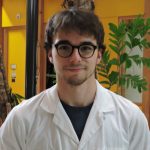 |
| Team | Ecogenomics of interactions team | |
| Supervisor | S. Uroz | |
| Subject | Characterization of the mineralosphere bacterial communities : focus on apatite samples incubated in the Aubure forest experimental site | |
| Type of study | Master 1 BioMANE, Lorraine University internship | |
| Period | April-June, 2018 |
| Name | GEISLER Océane oceane.geisler8@etu.univ-lorraine.fr |
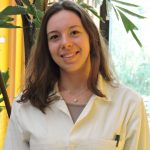 |
| Team | Ecogenomics of interactions team | |
| Supervisor | S. Uroz | |
| Subject | Characterization of the quorum sensing signal molecules and related genes in a Collimonas bacterial collection | |
| Type of study | Master 1 BioMANE, Lorraine University internship | |
| Period | April-June, 2018 |
| Name | Florine Gérard florine.gerard1@etu.univ-lorraine.fr |
 |
| Team | Stress response and redox regulation team | |
| Supervisor | A. Hecker | |
| Subject | Caractérisation des variants protéiques responsables du clivage phénotypique virulent/avirulent 7 chez la rouille du peuplier | |
| Type of study | M1 BioMANE internship | |
| Period | April-June, 2018 |
Article: The New Phytologist
The ectomycorrhizal basidiomycete Laccaria bicolor releases a secreted β-1, 4 endoglucanase that plays a key role in symbiosis development. F Zhang, GE Anasontzis, A Labourel, C Champion, M Haon, … The New phytologist
Abstract
In ectomycorrhiza, root ingress and colonization of the apoplast by colonizing hyphae is thought to rely mainly on the mechanical force that results from hyphal tip growth, but this could be enhanced by secretion of cell-wall-degrading enzymes, which have not yet been identified. The sole cellulose-binding module (CBM1) encoded in the genome of the ectomycorrhizal Laccaria bicolor is linked to a glycoside hydrolase family 5 (GH5) endoglucanase, LbGH5-CBM1. Here, we characterize LbGH5-CBM1 gene expression and the biochemical properties of its protein product. We also immunolocalized LbGH5-CBM1 by immunofluorescence confocal microscopy in poplar ectomycorrhiza. We show that LbGH5-CBM1 expression is substantially induced in ectomycorrhiza, and RNAi mutants with a decreased LbGH5-CBM1 expression have a lower ability to form ectomycorrhiza, suggesting a key role in symbiosis. Recombinant LbGH5-CBM1 displays its highest activity towards cellulose and galactomannans, but no activity toward L. bicolor cell walls. In situ localization of LbGH5-CBM1 in ectomycorrhiza reveals that the endoglucanase accumulates at the periphery of hyphae forming the Hartig net and the mantle. Our data suggest that the symbiosis-induced endoglucanase LbGH5-CBM1 is an enzymatic effector involved in cell wall remodeling during formation of the Hartig net and is an important determinant for successful symbiotic colonization.
New visitor: Jana SPERSCHNEIDER
| Name | SPERSCHNEIDER Jana jana.sperschneider@csiro.au |
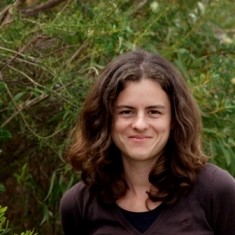 |
| Team | Ecogenomics of interactions team | |
| In interaction with | S. Duplessis | |
| Subject | Comparative rust genomics | |
| Type of visit | Scientific stay, coming from CSIRO-INRA MoU http://people.csiro.au/S/J/Jana-Sperschneider |
|
| Period | April 9-20, 2018 |
Seminar: Duy Vuong Nguyen
05/04/18 – 12h30- FST (University,1B, 3rd Floor, meeting room): Duy Vuong Nguyen (IAM – redox )
“Relevance of TOR pathways in Phanerochaete chrypsoporium RP 78“
Seminar: Maira de Freitas Pereira
06/04/18 – 13h30- INRA (LGEF): Maira de Freitas Pereira (IAM – ecogeno )
“Role of effectors-like SSPs in the ectomycorrhiza formation and functioning of Cenococcum geophilum”
PhD Position
English version below
Offre de thèse : Identification et caractérisation d’enzymes microbiennes pour la dépollution de bois traités.
Chaque année en France, 1,4 Mt de déchets sont produites sous forme de bois traités. Actuellement, aucune filière de recyclage de ces bois n’est disponible à cause de la toxicité des composés utilisés en amont pour leur préservation. L’objectif de ce projet est de développer une nouvelle stratégie utilisant des microorganismes et/ou des enzymes microbiennes comme biocatalyseurs pour l’élimination des composés toxiques dans les bois traités dans le but de (i) limiter l’impact de ces molécules sur l’environnement et la santé humaine, et (ii) à terme pouvoir utiliser cette source importante de déchets comme biomasse valorisable au niveau industriel. L’hypothèse de travail est basée sur le fait que certains microorganismes isolés ou en consortium possèdent des capacités accrues de résistance aux fongicides utilisés, des systèmes enzymatiques performants pour la dégradation de molécules complexes, et la capacité de sécréter des sidérophores pour le piégeage des métaux. Le travail du candidat recruté consistera à tester les capacités de champignons et bactéries à dépolluer des bois traités et comprendre les mécanismes moléculaires impliqués grâce à des approches de génomique, transcriptomique et protéomique. Ces approches à grande échelle permettront de sélectionner des protéines candidates qui seront produites en système hétérologue et caractérisées plus finement au niveau biochimique et fonctionnel.
L’Unité Mixte de Recherche INRA/Université de Lorraine 1136 Interactions Arbres/Micro-organismes (IAM) étudie la biologie et l’écologie des interactions entre micro-organismes et arbres forestiers. Les recherches de l’Unité visent à améliorer notre connaissance et notre compréhension des interactions qui s’établissent entre les arbres, les champignons et les bactéries rhizosphériques, et qui contribuent au fonctionnement et à la durabilité des écosystèmes forestiers.
L’UMR IAM est organisée en trois équipes soutenues par des plateaux techniques :
Equipe Réponse aux stress et régulation redox
Equipe Ecogénomique des interactions
Equipe Ecologie des champignons pathogènes forestiers
L’Unité IAM fait partie du Laboratoire d’Excellence ARBRE et est reconnue par l’ “AgreenSkills mobility programme“.
Le candidat s’intégrera dans l’équipe Réponse aux stress et régulation redox de l’UMR IaM 1136 située sur le campus de la Faculté des Sciences et Technologie de l’Université de Lorraine à Vandoeuvre-lès-Nancy. Des compétences en microbiologie et biologie moléculaire sont requises. Des compétences en biochimie et bioinformatique seraient un avantage supplémentaire.
Contact : Mélanie Morel-Rouhier
Email : Melanie.Morel@univ-lorraine.fr
Site Web : https://mycor.iam.inrae.fr/IAM/
English version:
Identification and characterization of microbial enzymes for wood decontamination.
1.4 Mt of wood wastes are produced each year in France and no recycling is possible because of the toxicity of the products used for wood preservation. The main objective of the proposal is to develop a new strategy using microorganisms and/or microbial enzymes as biocatalysts for wood decontamination. The aim is to (i) limit the impact of the toxic compounds on the environment and human health and (ii) be able to recycle and valorize wood waste biomass. The working hypothesis is based on the fact that microorganisms either as single species or in consortium exhibit increased ability to resist to the toxic compounds, possess efficient enzymatic systems for complex molecules degradation and are able to secrete siderophores for metal sequestration. The PhD project will be to test the ability of fungi and bacteria to detoxify wood waste and understand the molecular mechanisms involved in the process, thanks to genomic, transcriptomic and proteomic approaches. These global analyses will help identifying molecular actors for further biochemical and functional characterization after production and purification of the recombinant proteins in heterologous systems.
Research projects performed by the UMR INRA/Lorraine University 1136 «Interactions Arbres-Microorganismes » are dedicated to the biology and the ecology of the interactions between microorganisms and forest trees.
The ultimate goals of these projects are to improve our knowledge and our understanding of the interactions that take place between trees, fungi and bacteria, and that contribute to the sustainable functioning of forest ecosystems.
The Department is organized into three teams:
- Stress response and redox regulation team
- Ecogenomics of Interactions team
- Ecology of forest pathogenic fungi team
and is supported by technical platforms
IAM is member of the Lab of Excellence for Advanced Research on the Biology of TRee and Forest Ecosystems (ARBRE) and is recognized by the AgreenSkills mobility programme for the quality of the support offered to postdoctoral research fellows that have been awarded an AgreenSkills Fellowship
The candidate will join the team « Stress response and redox regulation » located at the Faculty of Science and Technology (Lorraine University) at Vandoeuvre-lès-Nancy. Skills in microbiology and molecular biology are required. Skills in biochemistry and bioinformatics could be an advantage.
Contact : Mélanie Morel-Rouhier
Email : Melanie.Morel@univ-lorraine.fr
Web site : https://mycor.iam.inrae.fr/IAM/
